What does it mean when you are constipated. Constipation: Symptoms, Causes, and Effective Relief Strategies
What are the common symptoms of constipation. How can diet and lifestyle changes alleviate constipation. What medical treatments are available for chronic constipation. When should you seek medical attention for constipation.
Understanding Constipation: More Than Just Infrequent Bowel Movements
Constipation is a common digestive issue that affects millions of people worldwide. It’s characterized by infrequent bowel movements, difficulty passing stools, or a sensation of incomplete evacuation. While occasional constipation is normal, chronic constipation can significantly impact one’s quality of life and may indicate underlying health issues.
Is constipation simply defined by the frequency of bowel movements? Not necessarily. While having fewer than three bowel movements per week is a key indicator, the consistency and ease of passing stools are equally important factors. Hard, dry, or lumpy stools that are difficult to pass are hallmarks of constipation, even if they occur more frequently.

Recognizing the Signs: Key Symptoms of Constipation
Identifying constipation early can help prevent more serious complications. Here are the primary symptoms to watch for:
- Infrequent bowel movements (less than three times per week)
- Hard, dry, or lumpy stools
- Straining or pain during bowel movements
- Feeling of incomplete evacuation after a bowel movement
- Abdominal bloating or discomfort
- Need for manual maneuvers to facilitate bowel movements
Can constipation symptoms vary from person to person? Indeed, the experience of constipation can be highly individual. Some people may have daily bowel movements but still feel constipated due to the difficulty in passing stools, while others may have less frequent movements without discomfort.
The Root of the Problem: Common Causes of Constipation
Understanding the underlying causes of constipation is crucial for effective management and prevention. Here are some of the most common factors:
Dietary Factors
- Low fiber intake
- Inadequate hydration
- Excessive consumption of dairy products
- High intake of processed foods
Lifestyle Factors
- Sedentary behavior
- Ignoring the urge to have a bowel movement
- Stress and anxiety
- Changes in routine or travel
Medical Conditions and Medications
- Hypothyroidism
- Irritable Bowel Syndrome (IBS)
- Neurological disorders (e.g., Parkinson’s disease, multiple sclerosis)
- Certain medications (e.g., opioids, antidepressants, iron supplements)
How does the colon contribute to constipation? The colon plays a crucial role in water absorption from digested food. If stool moves too slowly through the colon, excessive water absorption can lead to hard, dry stools that are difficult to pass.
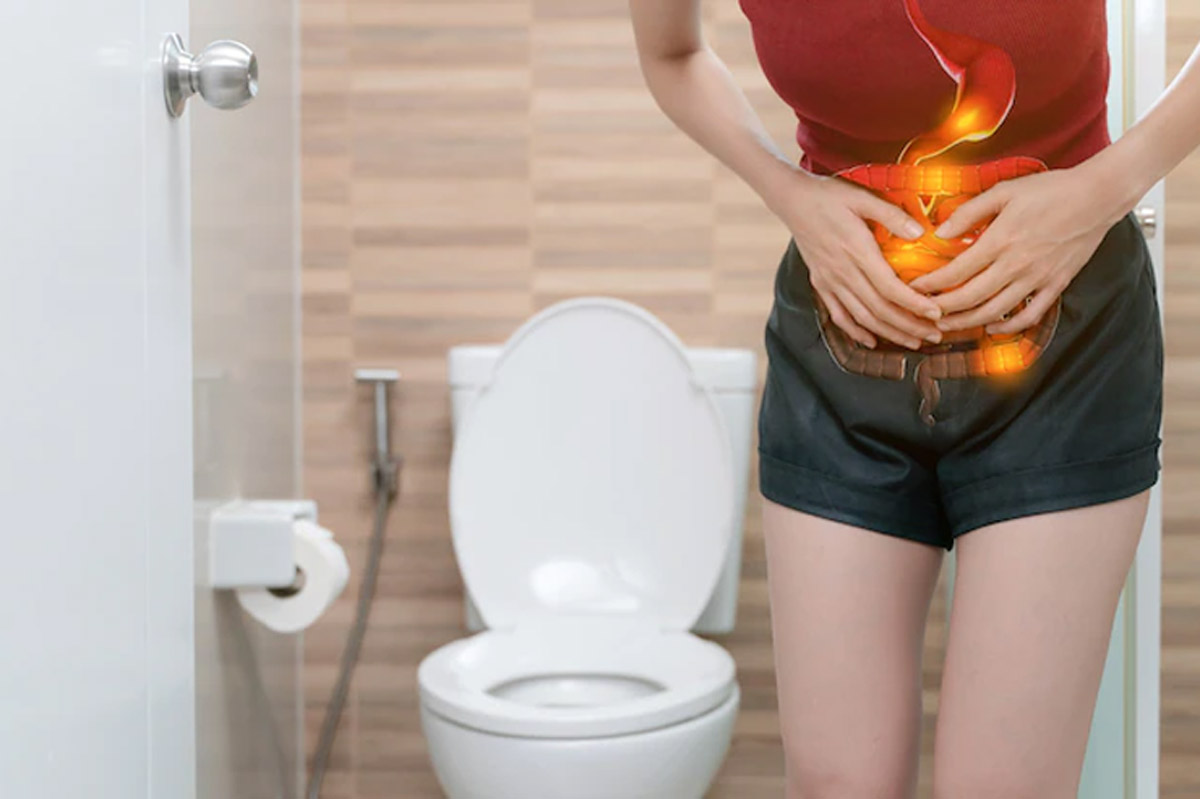
Breaking the Cycle: Effective Relief Strategies for Constipation
Fortunately, there are numerous strategies to alleviate constipation and promote regular bowel movements. Here are some effective approaches:
Dietary Modifications
- Increase fiber intake: Aim for 20-35 grams of fiber daily from sources like fruits, vegetables, whole grains, and legumes.
- Stay hydrated: Drink at least 8 glasses of water per day to soften stools and promote regularity.
- Limit constipating foods: Reduce consumption of processed foods, cheese, and excessive red meat.
- Consider natural laxatives: Prunes, figs, and chia seeds can help promote bowel movements.
Lifestyle Changes
- Regular exercise: Engage in moderate physical activity for at least 30 minutes daily to stimulate bowel function.
- Establish a routine: Set aside time each day for bowel movements, preferably after meals.
- Don’t ignore the urge: Respond promptly to the body’s signals for bowel movements.
- Practice stress-reduction techniques: Meditation, yoga, or deep breathing exercises can help alleviate stress-related constipation.
How effective are dietary and lifestyle changes in relieving constipation? For many individuals, these modifications can significantly improve bowel regularity and alleviate constipation symptoms within a few weeks.
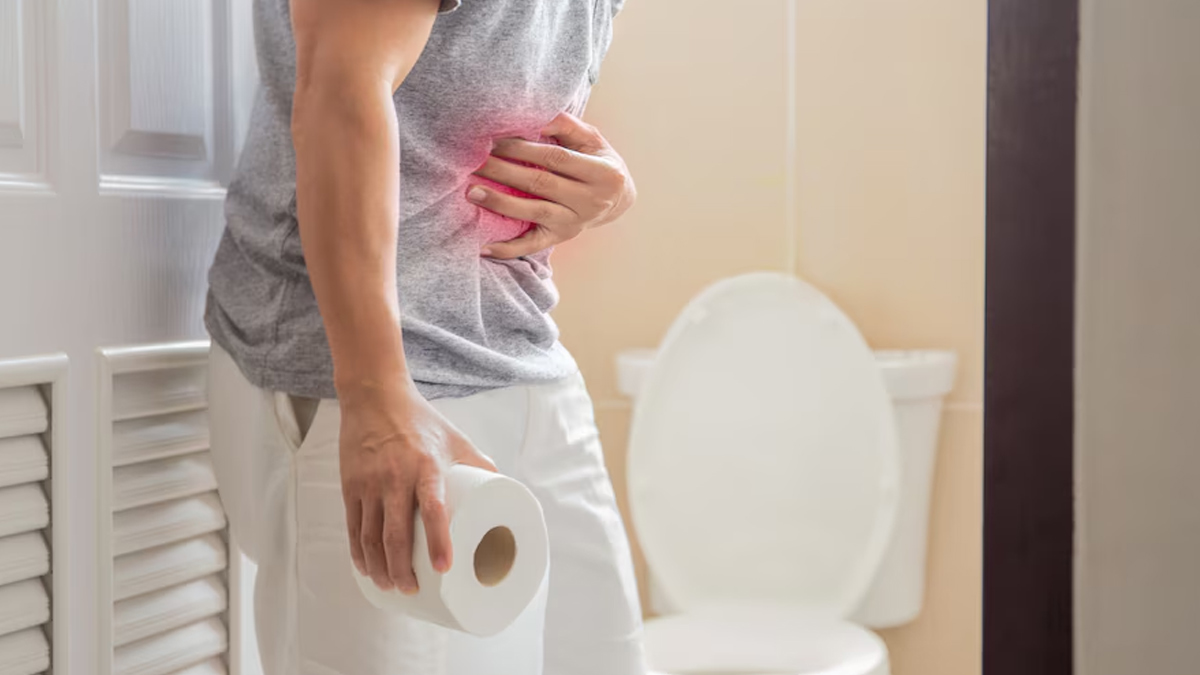
When to Seek Medical Attention: Red Flags and Complications
While most cases of constipation can be managed with lifestyle changes and over-the-counter remedies, certain symptoms warrant immediate medical attention:
- Rectal bleeding or blood in the stool
- Severe abdominal pain
- Unexplained weight loss
- Persistent constipation despite lifestyle changes
- Alternating constipation and diarrhea
- Chronic constipation in older adults
Why is it important to address chronic constipation promptly? Prolonged constipation can lead to complications such as hemorrhoids, anal fissures, fecal impaction, or even bowel obstruction. Additionally, it may be a symptom of more serious underlying conditions that require medical evaluation.
Medical Interventions: When Lifestyle Changes Aren’t Enough
In cases where lifestyle modifications prove insufficient, healthcare providers may recommend various medical interventions:
Over-the-Counter Laxatives
- Bulk-forming agents (e.g., psyllium)
- Osmotic laxatives (e.g., polyethylene glycol)
- Stimulant laxatives (e.g., bisacodyl)
- Stool softeners (e.g., docusate sodium)
Prescription Medications
- Linaclotide (Linzess)
- Lubiprostone (Amitiza)
- Plecanatide (Trulance)
- Prucalopride (Motegrity)
Advanced Treatments
- Biofeedback therapy
- Botox injections for pelvic floor dysfunction
- Surgery (in rare, severe cases)
How do healthcare providers determine the most appropriate treatment for chronic constipation? The choice of treatment depends on the underlying cause, severity of symptoms, and individual patient factors. A comprehensive evaluation, including medical history, physical examination, and possibly diagnostic tests, guides the treatment approach.

Prevention: Maintaining Digestive Health for the Long Term
Preventing constipation is often easier than treating it. Here are some long-term strategies to promote regular bowel movements and overall digestive health:
- Develop a high-fiber diet: Gradually increase fiber intake to allow your digestive system to adjust.
- Stay consistently hydrated: Make water your primary beverage and limit diuretics like caffeine and alcohol.
- Incorporate physical activity into your daily routine: Even short walks can make a significant difference.
- Manage stress: Chronic stress can disrupt digestive function, so find effective stress-management techniques.
- Listen to your body: Don’t ignore the urge to have a bowel movement, and create a relaxed environment for toileting.
- Be cautious with laxatives: Overuse can lead to dependence and worsen constipation in the long run.
- Review medications: Discuss potential constipation-causing medications with your healthcare provider.
Is it possible to “retrain” the bowels for more regular movements? Yes, establishing a consistent toileting routine, often 15-45 minutes after meals when the gastrocolic reflex is strongest, can help regulate bowel habits over time.
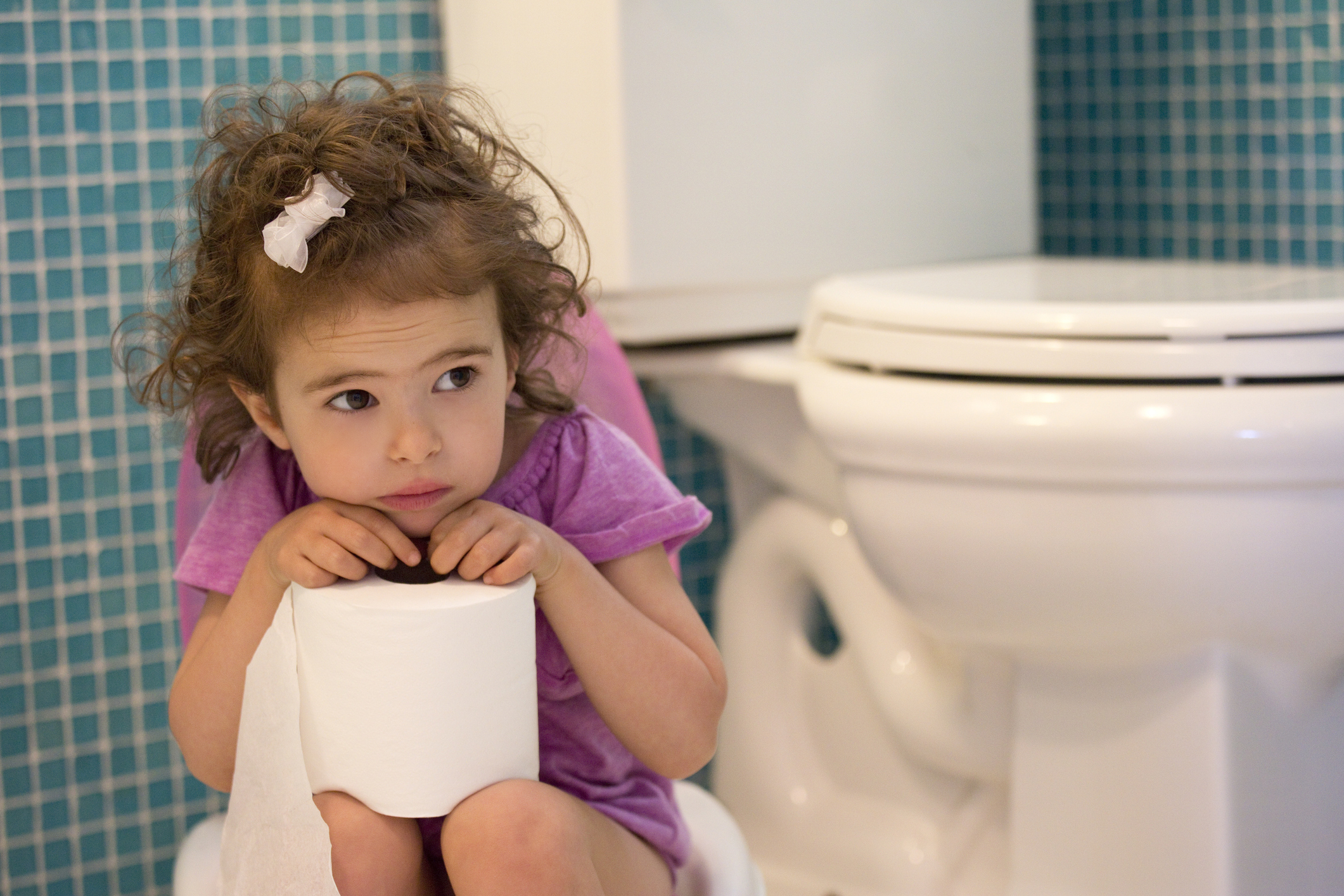
Special Considerations: Constipation in Specific Populations
Certain groups may be more prone to constipation or require special management approaches:
Pregnancy
Hormonal changes and physical pressure on the intestines can increase the risk of constipation during pregnancy. Safe management strategies include:
- Increased fiber and water intake
- Regular, gentle exercise (with healthcare provider approval)
- Safe, pregnancy-approved laxatives when necessary
Older Adults
Constipation is more common in older adults due to factors like reduced mobility, medication use, and chronic health conditions. Management focuses on:
- Maintaining adequate hydration and fiber intake
- Encouraging physical activity within individual capabilities
- Reviewing and adjusting medications
- Addressing underlying health conditions
Children
Pediatric constipation requires a tailored approach, considering factors like diet, toilet training, and psychological aspects. Treatment may include:
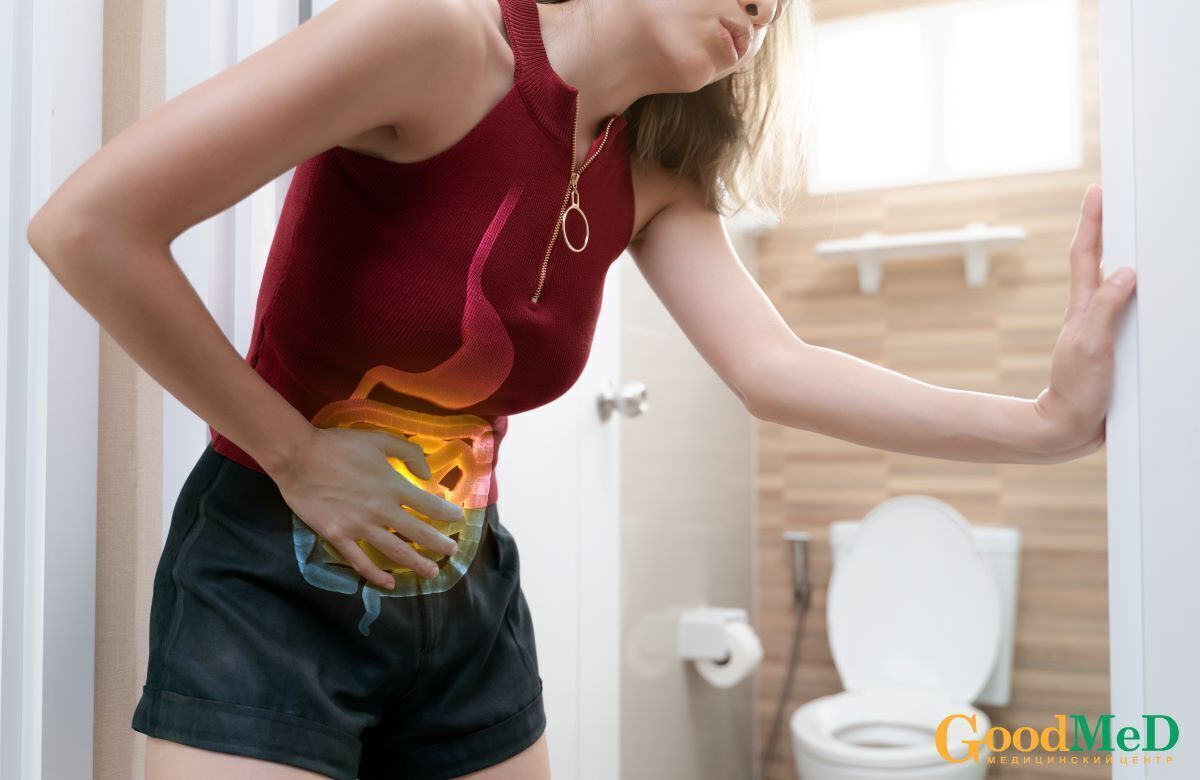
- Dietary modifications
- Behavioral interventions
- Careful use of child-appropriate laxatives under medical supervision
How does the approach to managing constipation differ across these populations? While the basic principles remain similar, the specific interventions, safety considerations, and potential complications vary, necessitating individualized care plans.
The Gut-Brain Connection: Psychological Factors in Constipation
The intricate relationship between the gut and the brain plays a significant role in digestive health, including constipation. Psychological factors can both contribute to and exacerbate constipation symptoms:
Stress and Anxiety
Chronic stress and anxiety can disrupt normal gut motility and contribute to constipation. Stress-reduction techniques such as mindfulness meditation, cognitive-behavioral therapy, and regular exercise can help manage these effects.
Depression
Depression can lead to changes in appetite, physical activity levels, and overall self-care, all of which can contribute to constipation. Addressing underlying depression through therapy and, when appropriate, medication can improve both mental health and digestive symptoms.
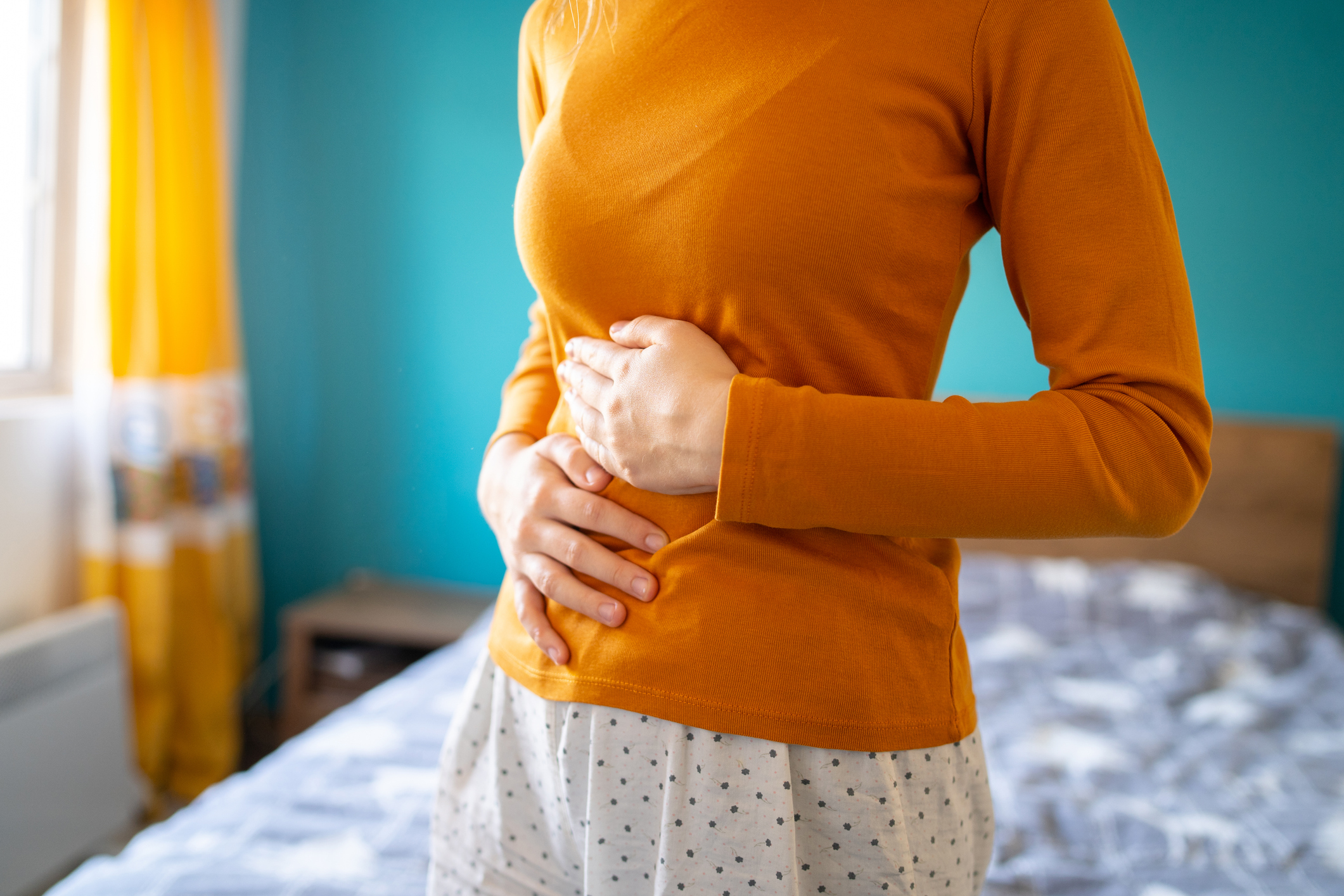
Eating Disorders
Conditions like anorexia nervosa and bulimia can severely impact digestive function, leading to chronic constipation. Comprehensive treatment of the eating disorder is essential for resolving associated digestive issues.
Can psychological interventions alone alleviate constipation symptoms? While psychological approaches can be beneficial, particularly in stress-related constipation, they are often most effective when combined with dietary and lifestyle modifications.
Emerging Research and Future Directions in Constipation Management
The field of gastroenterology continues to evolve, offering new insights and potential treatments for constipation:
Microbiome Research
Studies on the gut microbiome are revealing its role in digestive health and constipation. Probiotics and prebiotics are being investigated as potential therapeutic options.
Targeted Therapies
Researchers are developing new medications that target specific receptors and pathways involved in gut motility and secretion, offering hope for more effective and personalized treatments.

Neuromodulation
Techniques like sacral nerve stimulation are being explored for severe, refractory constipation cases, offering a potential alternative to surgery.
Digital Health Solutions
Mobile apps and wearable devices that track dietary intake, hydration, and bowel habits are emerging as tools to help individuals manage constipation more effectively.
How might these emerging approaches change the landscape of constipation management in the coming years? As our understanding of the complex factors influencing gut health grows, we can expect more targeted, personalized, and potentially more effective strategies for preventing and treating constipation.
Constipation, while common, is a complex condition that can significantly impact quality of life. By understanding its causes, recognizing its symptoms, and implementing appropriate lifestyle changes and treatments, most individuals can find relief. For those with persistent or severe symptoms, medical evaluation and intervention may be necessary to identify and address underlying issues. As research continues to advance our understanding of digestive health, we can look forward to even more effective strategies for managing and preventing constipation in the future.
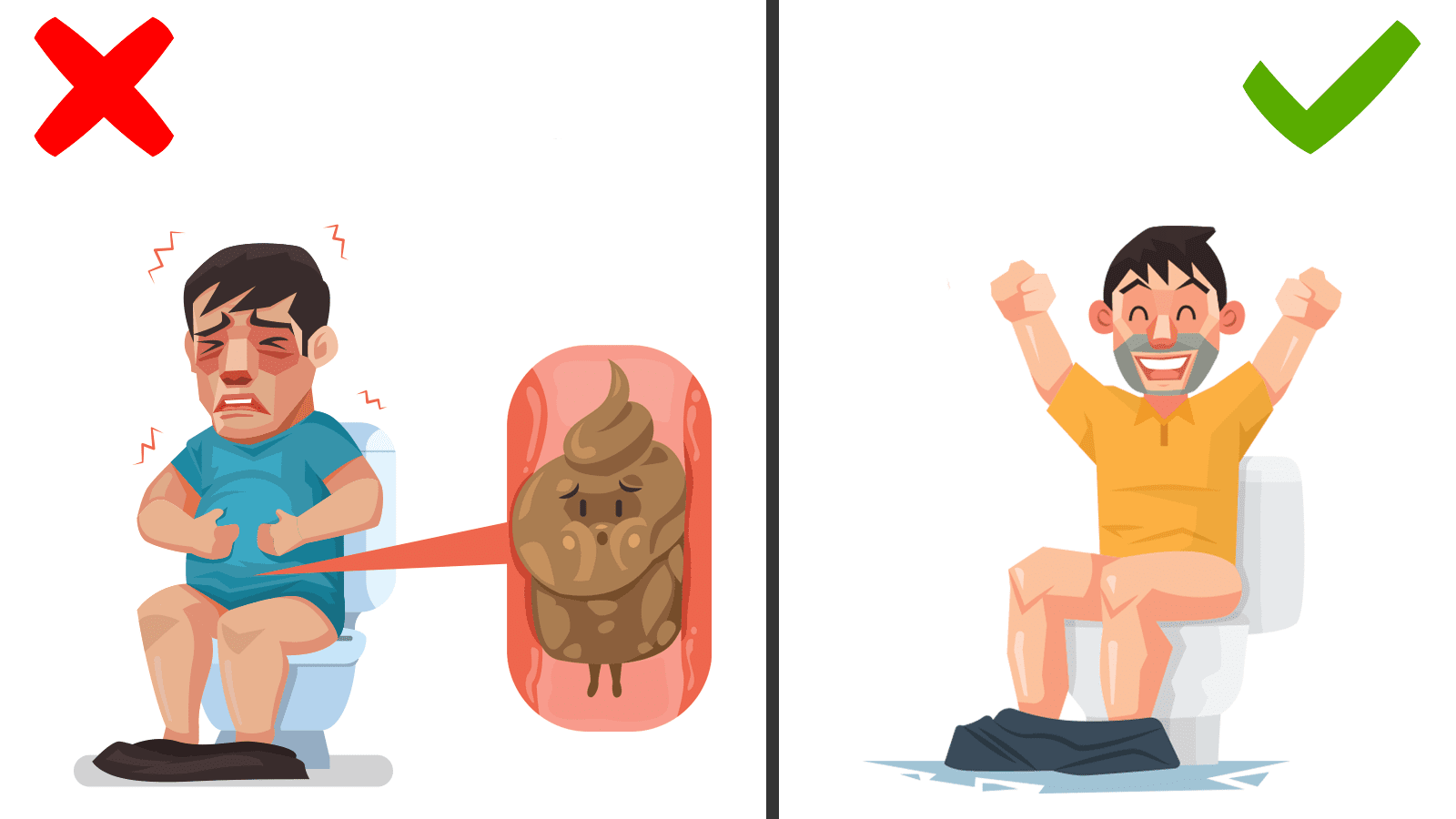
Symptoms, Causes, Relief, and More
Constipation means having hard, dry bowel movements or passing stool fewer than three times a week. It can be caused by things like your diet, medications, whether you are pregnant, or just a change in your routine.
Constipation is one of the most common digestive problems in the United States. Around 16 out of 100 U.S. adults have constipation. This figure doubles for adults over age 60.
Read on to learn the symptoms and causes of constipation, and how it can be treated.
Each person’s bowel habits are different. Some people go three times a day, while others go three times a week.
However, you may be constipated if you experience the following symptoms:
- fewer than three bowel movements a week
- passing lumpy, hard, or dry stools
- straining or pain during bowel movements
- a feeling of fullness, even after having a bowel movement
The National Institute of Diabetes and Digestive and Kidney Diseases (NIDDK) recommends seeking medical advice if symptoms don’t go away or if you notice the following:
- bleeding from the rectum
- blood in your stool
- persistent abdominal pain
- pain in the lower back
- a feeling that gas is trapped
- vomiting
- fever
- unexplained weight loss
- a sudden change in bowel movements
A healthcare professional may carry out tests to rule out a more serious condition, such as colorectal cancer or irritable bowel syndrome (IBS).
Your colon’s main job is to absorb water from residual food as it’s passing through your digestive system. It then creates stool (waste).
The colon’s muscles eventually propel the waste out through the rectum to be eliminated. If stool remains in the colon too long, it can become hard and difficult to pass.
Poor diet frequently causes constipation. Dietary fiber and adequate water intake are necessary to help keep stools soft.
Fiber-rich foods are usually plant-based. Fiber comes in soluble and insoluble forms. Soluble fiber can dissolve in water and creates a soft, gel-like material as it passes through the digestive system.
Insoluble fiber retains most of its structure as it goes through the digestive system. Both forms of fiber join with stool, increasing its weight and size while also softening it. This makes it easier to pass through the rectum.
Stress, changes in routine, and conditions that slow muscle contractions of the colon or delay your urge to go may also lead to constipation.
Common causes of constipation include:
- low fiber diet, particularly diets high in meat, milk, or cheese
- dehydration
- low exercise levels
- delaying the impulse to have a bowel movement
- travel or other changes in routine
- medications, including certain antacids, pain medications, diuretics, and some treatments for Parkinson’s disease
- pregnancy
- older age (constipation affects around one-third of people ages 60 and over)
Underlying health issues
The following underlying health conditions can bring on constipation:
- certain conditions, such as stroke, Parkinson’s disease, and diabetes
- problems with the colon or rectum, including intestinal obstruction, IBS, or diverticulosis
- overuse or misuse of laxatives
- hormonal problems, including an underactive thyroid gland
Changing your diet and increasing your physical activity level are the easiest and fastest ways to treat and prevent constipation.
You can try the following techniques as well:
- Every day, drink 1.5 to 2 quarts of unsweetened fluids, like water, to hydrate the body.
- Limit consumption of alcohol and caffeinated drinks, which cause dehydration.
- Add fiber-rich foods to your diet, such as raw fruits and vegetables, whole grains, beans, prunes, or bran cereal. Your daily intake of fiber should be between 20 and 35 grams.
- Cut down on low fiber foods, such as meat, milk, cheese, and processed foods.
- Aim for about 150 minutes of moderate exercise every week, with a goal of 30 minutes per day at least five times per week. Try walking, swimming, or biking.
- If you feel the urge to have a bowel movement, don’t delay. The longer you wait, the harder your stool can become.
- Ask your doctor about bowel training to get your body used to passing stool 15 to 45 minutes after breakfast each day.
- Raise your knees by putting your feet on a footstool when having a bowel movement.

- When using the bathroom, allow yourself plenty of time, and try to relax your muscles.
- Use laxatives sparingly. A healthcare professional may prescribe laxatives or enemas for a short period of time to help soften your stools. Never use laxatives for more than 2 weeks without talking with a healthcare professional. Your body can develop a dependence on them.
- Ask a healthcare professional if any of your medications might be causing constipation.
Over-the-counter medications
If home remedies do not work, a healthcare professional may recommend an over-the-counter laxative, such as:
- fiber supplements
- osmotic agents, such as Milk of Magnesia
- stool softeners
- lubricants, such as mineral oil
- stimulants
Prescription drugs
If you still have trouble with constipation, a healthcare professional may prescribe medications to help, such as:
- lubiprostone, which increases fluid levels in the intestine
- linaclotide or plecanatide, which can help make bowel movements more regular for people with long-term constipation or IBS
- prucalopride, which can help the colon move the stool along
A healthcare professional may also advise that you stop taking certain medications that may cause constipation.
Other options
Other strategies that may help are:
- biofeedback therapy, which can help a person retrain their muscles
- an enema
- a procedure to manually remove feces to provide relief
- surgery to remove a blockage
- long-term treatment for a chronic condition, such as IBS
Tips for preventing constipation are similar to those for relieving it.
Try the following:
- Eat plenty of fruits, vegetables, and whole grains.
- Eat high fiber foods and ask a healthcare professional about using fiber supplements.
- Include prunes or bran cereal in your diet.
- Drink plenty of water.
- Avoid alcohol and caffeine, as they can lead to dehydration.
- Get regular exercise.
- Consider adding probiotics to your diet, like those found in yogurt and kefir with live active cultures.
- Train your muscles to have a bowel movement at the same time each day.
Some studies have shown that adding probiotics can be helpful for people with chronic constipation. If you add fiber supplements, remember to drink plenty of fluids. Fluids help fiber work more efficiently.
If you add fiber supplements, remember to drink plenty of fluids. Fluids help fiber work more efficiently.
If constipation persists, or if you have concerns about your symptoms, it may be time to see a healthcare professional.
A healthcare professional:
- will ask questions about your symptoms, medical history, and any medications or underlying conditions
- may carry out a physical examination, including a rectal exam
- may do some blood tests to check your blood count, electrolytes, and thyroid function
They may recommend additional tests to identify the cause of your symptoms. Tests may include the following:
Marker study
A marker study, also called a colorectal transit study, is used to test how food is moving through your colon. For this test, you’ll swallow a pill that contains tiny markers that will show up on an X-ray.
Numerous abdominal X-rays will be taken over the next few days so the healthcare professional can visualize how the food is moving through your colon and how well your intestinal muscles are working.
You may also be asked to eat a diet high in fiber during the test.
Anorectal manometry
An anorectal manometry is a test used to evaluate anal sphincter muscle function. For this test, a healthcare professional will insert a thin tube with a balloon tip into your anus.
When the tube is inside, they will inflate the balloon and slowly pull it out. This test allows them to measure your anal sphincter’s muscle strength and see whether your muscles are contracting properly.
Barium enema X-ray
A barium enema X-ray is a type of test used to examine the colon. For this test, you’ll drink a special liquid the night before the test to clean out the bowel.
The actual test involves the insertion of a dye called barium into your rectum, using a lubricated tube. The barium highlights the rectum and colon area. This allows the healthcare professional to better view these areas on an X-ray.
Colonoscopy
A colonoscopy is another type of test healthcare professionals use to examine the colon. In this test, a healthcare professional will examine your colon using a colonoscope. This is a tube fitted with a camera and light source.
In this test, a healthcare professional will examine your colon using a colonoscope. This is a tube fitted with a camera and light source.
A sedative and pain medication is often given, so you’ll likely not even remember the examination and should feel no pain.
To prepare for this test, you’ll be on a liquid-only diet for 1 to 3 days. You may have to take a laxative or enema the night before the test to clean out the bowel.
Constipation is a common problem that affects people as they get older, when they use certain medications, or if they don’t have much fiber in their diet.
Most cases of constipation are mild and easily treated with changes in diet and exercise.
If you’re experiencing chronic constipation or constipation along with other bowel changes, it’s important that you talk with a healthcare professional.
Common causes of constipation – Harvard Health
Many factors can dispose a person to constipation. Some can easily be prevented by changing habits and lifestyle (although the role of lifestyle factors may not be as important as once thought). Often, the cause has to do with physiological problems or diseases.
Often, the cause has to do with physiological problems or diseases.
Following are the more common causes of constipation:
Lack of exercise. People who exercise regularly generally don’t develop constipation. Basically, the colon responds to activity. Good muscle tone in general is important for regular bowel movements. The abdominal wall muscles and the diaphragm all play a crucial role in the process of defecation. If these muscles are weak, they’re not going to be able to do the job as well. But exercise is not a cure-all. Increasing exer-cise to improve constipation may be more effective in older people, who tend to be more sedentary, than in younger people.
Opioids. The digestive tract has receptors for opioids, and constipation can occur (or worsen) when people take opioid pain medications. Opioid-induced constipation occurs in roughly 94% of cancer patients taking opioids for pain and 41% of people taking opioids for chronic noncancer pain.
Other medications.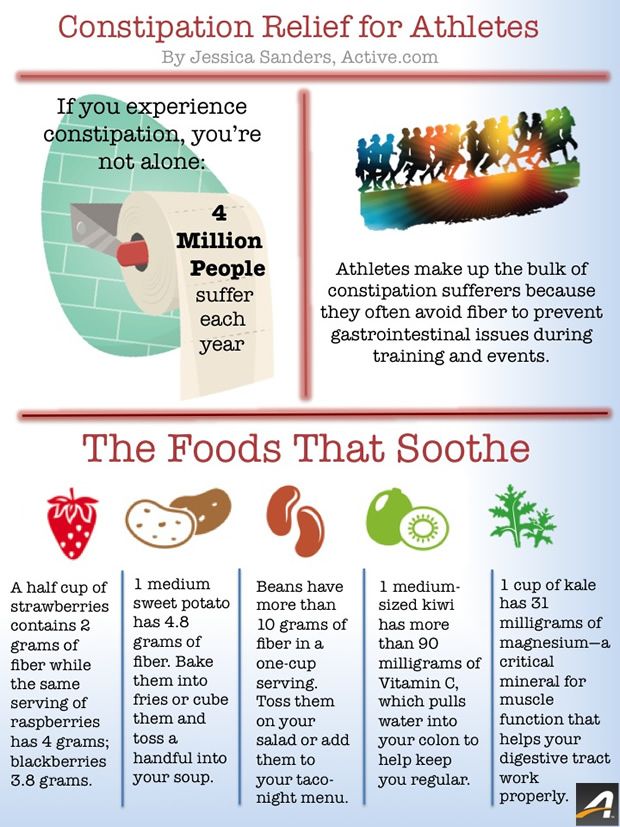 Constipation is a side effect of many prescription and over-the-counter drugs. These include antacids that contain aluminum, antispasmodics, antidepressants, tranquilizers and sedatives, bismuth salts, iron supplements, diuretics, anticholinergics, calcium-channel blockers, and anticonvulsants.
Constipation is a side effect of many prescription and over-the-counter drugs. These include antacids that contain aluminum, antispasmodics, antidepressants, tranquilizers and sedatives, bismuth salts, iron supplements, diuretics, anticholinergics, calcium-channel blockers, and anticonvulsants.
Irritable bowel syndrome (IBS). Some people who suffer from IBS have sluggish bowel movements, straining during bowel movements, and abdominal discomfort. Constipation may be the predominant symptom, or it may alternate with diarrhea. Cramping, gas, and bloating are also common.
Abuse of laxatives. Laxatives are sometimes used inappropriately, for example, by people suffering from anorexia nervosa or bulimia. But for people with long-term constipation, the extended use of laxatives may be a reasonable solution. In the past, long-term use of some laxatives was thought to damage nerve cells in the colon and interfere with the colon’s innate ability to contract. However, newer formulations of laxatives have made this outcome rare
However, newer formulations of laxatives have made this outcome rare
Changes in life or routine. Traveling can give some people problems because it disrupts normal diet and daily routines. Aging often affects regularity by reducing intestinal activity and muscle tone. Pregnancy may cause women to become constipated because of hormonal changes or because the enlarged uterus pushes on the intestine.
Ignoring the urge. If you have to go, go. If you hold in a bowel movement, for whatever reason, you may be inviting a bout of constipation. People who repeatedly ignore the urge to move their bowels may eventually stop feeling the urge.
Not enough fiber and fluids in the diet. A diet too low in fiber and fluids and too high in fats can con-tribute to constipation. Fiber absorbs water and causes stools to be larger, softer, and easier to pass. Increasing fiber intake helps cure constipation in many people, but those with more severe constipation sometimes find that increasing fiber makes their constipation worse and leads to gassiness and discomfort.
Other causes. Diseases that can cause constipa-tion include neurological disorders, such as Parkinson’s disease, spinal cord injury, stroke, or multiple sclerosis; metabolic and endocrine disorders, such as hypothyroidism, diabetes, or chronic kidney disease; bowel cancer; and diverticulitis. A number of systemic conditions, like scleroderma, can also cause constipation. In addition, intestinal obstructions, caused by scar tissue (adhesions) from past surgery or strictures of the colon or rectum, can compress, squeeze, or narrow the intestine and rectum, causing constipation.
For more on treating constipation and other gastrointestinal conditions, read The Sensitive Gut, a Special Health Report from Harvard Medical School.
Image: © Wavebreakmedia | GettyImages
causes, symptoms and treatments for the condition
Contents
- 1 Causes, symptoms and treatment of constipation: features of the condition
- 1.1 What is constipation?
- 1.
 2 Causes of constipation
2 Causes of constipation - 1.3 Symptoms of constipation
- 1.4 How to diagnose constipation
- 1.5 Prevention of constipation
- 1.5.1 Proper nutrition
- 1. 5.2 Regular exercise
- 1.5.3 Avoid bad habits
- 1.5.4 Regular health checks
- 1.6 Constipation diet
- 1.6.1 Key recommendations
- 1.6.2 Good foods
- 1.6.3 Unwanted foods 90 008
- 1.7 Medicines for constipation
- 1.8 Exercise for constipation
- 1.9 Traditional treatments for constipation
- 1.10 When should you see a doctor for constipation?
- 1.11 Related videos:
- 1.12 Q&A:
- 1.12.0.1 What is constipation and how does it occur?
- 1.12.0.2 What are the symptoms of constipation?
- 1.12.0.3 How can constipation be prevented?
- 1.12.0.4 What role does diet play in the treatment of constipation?
- 1.12.0.5 What medicines can be taken to treat constipation?
- 1.
 12.0.6 When should I see a doctor if I have constipation?
12.0.6 When should I see a doctor if I have constipation?
Find out why constipation occurs, what symptoms accompany this pathological condition, and how to treat them. Read the article on our website and get useful information for the health of your body.
Constipation is one of the common problems faced by people of all ages and genders. This is a pathological condition characterized by difficulty or retention of stool for more than 48 hours. In some cases, the stool may be empty, hard, and large. This condition can become quite problematic and cause discomfort, soreness and even depression in some people.
Constipation can be caused by various reasons. Some of these include lack of physical activity, lack of fluid in the body, changes in regular diet, stress, and even certain medications. However, sometimes constipation can be associated with serious conditions such as colon cancer or irritable bowel syndrome (IBS).
The symptoms of constipation can vary from person to person. However, the most common symptoms are difficult or infrequent bowel movements, a feeling of incomplete bowel movement, abdominal pain, and malaise.
However, the most common symptoms are difficult or infrequent bowel movements, a feeling of incomplete bowel movement, abdominal pain, and malaise.
It must be remembered that constipation is an issue in dire need of attention, and if you suffer from the corresponding symptoms, it is best to see a specialist for diagnosis and treatment of this problem.
What is constipation?
Constipation is a pathological condition when there is a slowdown in intestinal motility, which leads to the fact that the feces become denser and difficult to excrete from the body.
The frequency of bowel movements varies from person to person, and may be twice a day or twice a week. However, if emptying occurs less frequently, and the process itself becomes difficult, they speak of a violation – constipation.
Constipation can occur for many reasons, from malnutrition to the presence of diseases of the gastrointestinal tract. The main symptom of constipation is infrequent (most often less than once every two days) and difficult bowel movements.
Causes of constipation
Constipation can be caused by various factors. One of the main reasons is malnutrition, when an insufficient amount of fiber does not contribute to normal intestinal motility. Inadequate fluid intake can also lead to constipation. It is important to remember that the consumption of large amounts of fatty and fried foods also affects the functioning of the intestines.
Constipation can also be caused by certain medications, such as antidepressants, magnesium and calcium sulfates, antihistamines, and others. Acute psycho-emotional overload and stress can also affect bowel function and lead to constipation.
Finally, constipation can also be caused by certain diseases, such as diabetes, thyroid disease, colitis, and others. In such cases, a passenger approach to treatment and selection of prescriptions is necessary.
Symptoms of constipation
Constipation is a disorder of the gastrointestinal tract characterized by difficult and infrequent passage of feces through the intestines. The main symptom of constipation is the absence of stool for more than 48 hours. But besides this, patients may have other signs of this pathology.
The main symptom of constipation is the absence of stool for more than 48 hours. But besides this, patients may have other signs of this pathology.
- Abdominal pain – often occurs with constipation, especially when a large amount of stool accumulates in the intestines and the large intestine is distended.
- Abdominal distension – the intestines may become dilated due to the accumulation of feces, resulting in an unnatural bulge on the abdomen.
- Heartburn and nausea – When constipated, the contents of the stomach can be pushed back up the esophagus, causing heartburn and nausea.
- General weakness – occurs due to the constant feeling of heaviness in the abdomen, the inability to carry out the normal movement of feces and the lack of vitamins and nutrients that the body does not have time to absorb.
If you have one or more of these symptoms, see your doctor to find out the cause and prescribe the necessary treatment.
How to Diagnose Constipation
Constipation is a common condition in people of all ages and genders. However, in order to properly treat any pathological condition, it is necessary to properly diagnose it. There are several methods for diagnosing constipation:
- Interview. The doctor should ask the patient questions about the type of bowel movement and other symptoms such as abdominal pain and stool leakage.
- Physical examination. The doctor may examine the abdomen and proctal opening to assess the condition of the anal canal and rectum.
- Intestinal transfusion. This is a procedure in which aqueous solutions or oil are injected into the intestines to more accurately determine the location of the obstruction in the intestines.
- Intestinal examination. Examination methods may include colonoscopy, rectosigmoidoscopy, and other tests that can see the bowel inside.

The results of the diagnosis will help determine the causes of constipation and prescribe appropriate treatment.
Prevention of constipation
Proper nutrition
One of the main factors affecting bowel function is nutrition. To prevent constipation, you need to eat more fresh fruits and vegetables, including those rich in fiber and dietary fiber. You should also include cereals and liquids in the diet.
Regular exercise
Exercise helps speed up and improve bowel movement. Constant training and exercise also contribute to a positive effect on the functioning of the large and small intestines. Particularly useful among physical exercises are yoga and swimming.
Quitting bad habits
Smoking, alcohol and some medications can affect intestinal motility, which can cause constipation. Therefore, to prevent constipation, it is necessary to abandon bad habits and limit the use of drugs that can affect the functioning of the gastrointestinal tract.
Regular health check-ups
To prevent constipation, it is necessary to have regular check-ups with a doctor and follow his recommendations for maintaining the health of the body as a whole. Early detection and treatment of gastrointestinal disorders can prevent or reduce the risk of constipation.
Constipation Diet
Key Recommendations
A constipation diet should be high in fiber, contain adequate fluids, and avoid foods that may cause constipation. Key Recommendations:
- Eat fiber-rich vegetables and fruits
- Drink at least 1.5 liters of water a day
- Increase your protein intake
- Limit your intake of foods containing animal fats and simple carbohydrates
Also desirable eat food in small portions, but often, so that the food lump does not linger in the stomach and intestines.
Healthy Foods
Constipation diet should include fiber rich foods such as:
- Vegetables: broccoli, cauliflower, carrots, pumpkins, cucumbers, tomatoes and other vegetables
- Fruits: apples, pears, oranges, mangoes, bananas, cherries, etc.

- Cereals: oatmeal, buckwheat, corn, rice and other grains
- Legumes: beans, peas, chickpeas, lentils and other legumes
- Nuts: almonds, cashews, hazelnuts, walnuts and other types
Lean fish, meat and dairy products are also beneficial.
Undesirable foods
When constipated, it is necessary to limit the consumption of foods that can provoke constipation, such as:
- Fatty foods: margarine, mayonnaise, butter, lard and others
- Simple carbohydrates: sweets, pies, white bread and others white flour products
- Canned and processed foods
- Beans, radishes, cabbages and other foods that can cause bloating
It is also necessary to limit the consumption of coffee, alcohol and other drinks that can dry out the body and cause constipation.
Medicines for constipation
Constipation is a common medical condition that is often caused by poor lifestyle habits or undesirable factors.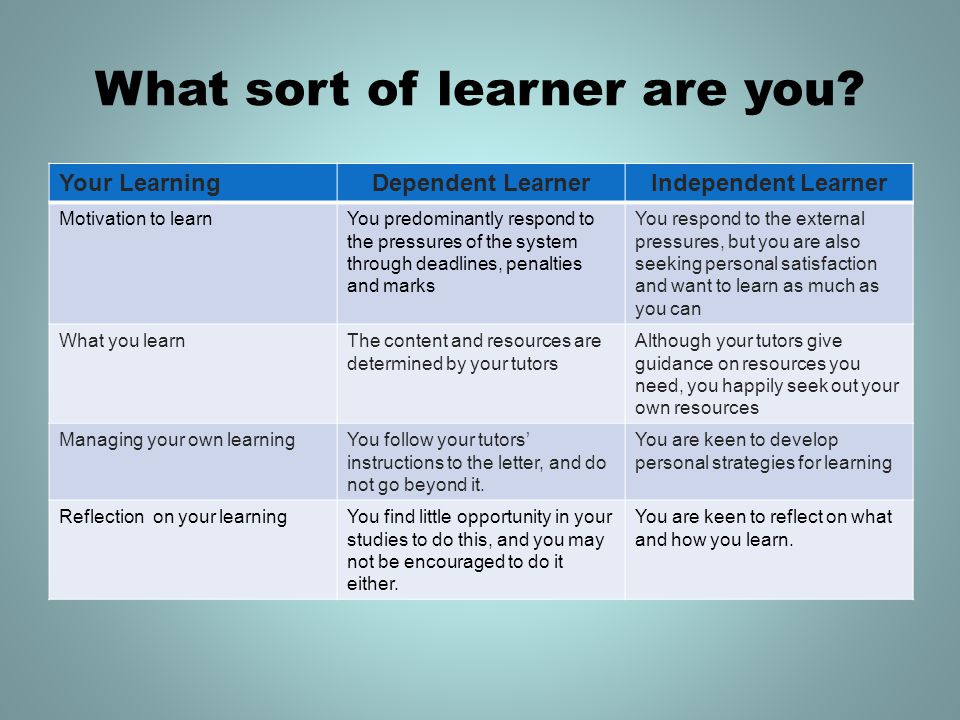 One way to treat constipation is to take medication.
One way to treat constipation is to take medication.
The main goals of drug therapy are to improve and accelerate intestinal motility, increase stool volume and soften its consistency. Depending on the type of constipation (atonic, spastic) and its causes, different types of drugs are used.
- Osmotic solvents. These preparations facilitate the process of defecation, improve the quality and consistency of the stool. They do not cause irritation of the intestinal mucosa, which makes them safe to use. These include lactulose, glycerin suppositories.
- Decoupling preparations. They increase the volume of the stool, facilitate its passage, improve peristalsis and protect against fluid deficiency in the body. These include magnesium sulfate, mannitol, sodium picosulfate.
- Preparations that improve intestinal motility. These drugs increase the strength and frequency of bowel contractions and hasten the passage of stool.
 One such drug is metoclopramide, which acts on nerve receptors.
One such drug is metoclopramide, which acts on nerve receptors. - Probiotics. They increase the amount of beneficial microflora in the intestines, increase immunity, soften hard stools and improve the general condition of the body.
Before eliminating constipation with medicines, it is necessary to consult a doctor and undergo the necessary set of examinations. And only after that start the treatment of constipation.
Exercise for constipation
Exercise can be an effective treatment for constipation and general health. They help to activate the intestines and speed up the process of digestion of food.
Leg Raises
One of the easiest exercises to combat constipation is the supine leg raise. The legs should be raised up, pressed and lowered, repeating the exercise 10-15 times.
Ship Pose
This exercise resembles the shape of a ship, with the body and legs raised in the air and the arms extended forward. The “ship” pose strengthens the abdominal muscles, which also has a positive effect on the process of digestion.
The “ship” pose strengthens the abdominal muscles, which also has a positive effect on the process of digestion.
Pear Pose
Pear Pose is an exercise in which the legs are extended to the sides and the body is straight. You can also do this pose while sitting on a mat. Repeat the pose 8-10 times.
All of the above exercises help improve digestion and promote regular bowel movements without harming your health. In addition, it is important to remember about proper diet and water intake to prevent constipation.
Traditional treatments for constipation
Constipation is a disorder of the gastrointestinal tract in which a person has difficulty emptying their bowels. To avoid this problem, many people resort to traditional methods of treatment. One such method is to eat foods rich in plant fibers, such as fruits, vegetables, and cereals. The fibers help soften the stool and help it pass through the intestines.
Another traditional treatment for constipation is abdominal massage. The method consists in performing special movements designed to stimulate the bowels. Massage can be performed independently or contact a massage therapist or a specialist.
The method consists in performing special movements designed to stimulate the bowels. Massage can be performed independently or contact a massage therapist or a specialist.
- Recommended products for consumption: fruits (apples, apricots, peaches), vegetables (beets, carrots, marrows), cereals (wheat, rye, oats).
- Herbal decoctions and infusions: hay infusion, dandelion root decoction, yarrow infusion.
- Abdominal massage: kneading the abdomen in a clockwise direction, stroking and circular movements through the intestines.
When should I see a doctor for constipation?
Constipation is a common medical condition that can affect anyone. In milder cases, it can be treated on its own, but there are situations when you definitely need to see a doctor.
- If constipation goes along with abdominal pain, then this may indicate a more serious problem in the body;
- Constipation does not resolve within a few days and the gastrointestinal tract is sluggish.
 In this case, it is important to immediately consult a doctor;
In this case, it is important to immediately consult a doctor; - There is severe bleeding from the anus;
- The patient has symptoms of intoxication such as vomiting or diarrhea, fever, and pale skin;
- In especially severe cases, the pain becomes unbearable and the patient needs emergency medical care.
It is important to understand that slowing down the process of removing feces from the body can lead to serious consequences. The sooner you see a doctor, the sooner treatment will begin and the sooner everything will return to normal.
Related videos:
Q&A:
What is constipation and how does it occur?
Constipation is the absence or difficulty of stool. The problem can arise due to many reasons, including poor diet, sedentary lifestyle, certain medications, and medical conditions.
What are the symptoms of constipation?
Symptoms of constipation may include a feeling of incomplete emptying of the bowels, heaviness and discomfort in the abdomen, hot flashes and sweating, and infrequent or difficult defecation.
How can constipation be prevented?
You can prevent constipation by following your doctor’s recommendations for proper nutrition, regular physical activity, and lifestyle changes.
What role does diet play in the treatment of constipation?
Diet can play an important role in the treatment of constipation. Including plenty of plant-based, high-fiber foods in your diet can help speed up the digestion process and make bowel movements easier.
What medicines can be taken to treat constipation?
Medicines for constipation may include laxatives, digestive aids, and other medicines that help stimulate bowel movement.
When should I see a doctor if I have constipation?
If you have frequent constipation or if your symptoms do not improve with lifestyle changes or diet and medication, you should see your doctor.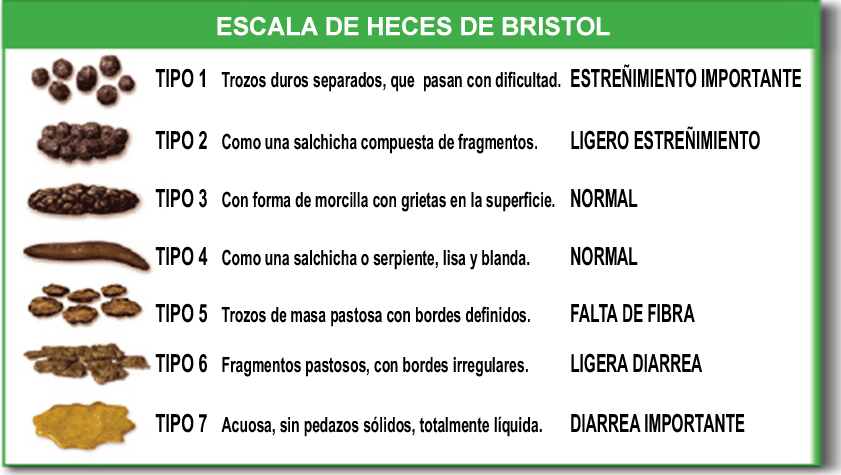 Persistent constipation may indicate a serious illness.
Persistent constipation may indicate a serious illness.
Symptoms of constipation – signs and manifestations of constipation in adults
2 Signs of constipation
Table of contents
- What is constipation
- Causes of constipation
- Why constipation is dangerous
- Diagnosis and examination of constipation
- Methods of treatment
According to surveys, 32% of patients of gastroenterologists are sure that defecation should be daily, and consider the absence of stool during the day as a delay 1 . Approximately 44% pay attention to stool hardening, 52% – to the need to strain to empty the rectum 1 . What is actually considered constipation, what symptoms require intervention – about this in the article.
What is considered constipation
To find out what symptoms characterize constipation, or, as doctors say, colostasis, you need to determine the physiological norms of defecation.
They depend on individual characteristics: functional activity and the state of the microflora of the digestive tract, the nature of nutrition. A number of external conditions also play a role.
Gastroenterologists consider it normal 1 :
- emptying of the rectum from three times a day to 1 time in three days;
- daily stool volume from 200 g to 40 g;
- soft feces, shaped like a cylinder;
- no need for prolonged straining (more than 25% of the time of defecation) when visiting the toilet “in a big way”.
Of course, the concept of the norm is individual, but still there are general signs that indicate a violation of the stool.
Symptoms of constipation in adults 1 :
- stool less than every three days;
- daily stool volume less than 35 g;
- dry fragmented (“sheep”) feces;
- strong and prolonged straining, taking more than 25% of the time from the moment the urge to defecate to the bowel movement 1 .

In addition, subjective sensations must be taken into account in the diagnosis of colostasis 1 :
- pain when going to the toilet “in a big way” – dense feces injure the anus mucosa, which causes its inflammation; feeling of incomplete bowel movement;
- inability to free the rectum and feeling of its “blockage”;
- the need for prolonged attempts during defecation, even despite the soft feces;
- Forced use of fingers (pressure on the perineum) to successfully expel feces 1 .
It is important to understand that constipation cannot be diagnosed by one of the above signs 1,2 . For example, the allocation of small portions of dense feces and the feeling of incomplete emptying of the rectum, even with daily bowel movements, indicate the presence of colostasis, and soft plentiful stools every four days in the absence of discomfort can be quite normal.
The stool disorder may be chronic. According to international experts in the field of gastroenterology, for the diagnosis of chronic constipation, it is enough that during the year for three months in a quarter of defecation cases two of the above signs are observed 1.2 .
According to international experts in the field of gastroenterology, for the diagnosis of chronic constipation, it is enough that during the year for three months in a quarter of defecation cases two of the above signs are observed 1.2 .
Causes of constipation
Stool retention is a common problem. According to statistics, up to 50% of adults and up to 20% of children in developed countries have problems with defecation to some extent 2 . Moreover, stool retention can occur for a variety of reasons.
Stool retention can be caused by external factors, various diseases and conditions of the body. The most common of them are the following.
The predominance in the diet of refined products with a low content of dietary fiber (flour, meat dishes, cereals from refined grains, etc.) leads to the death of the normal microflora of the digestive tract, which makes up almost half of the dry residue of feces 2 and decrease in intestinal motility due to a decrease in the volume of feces.
Insufficient fluid intake is usually accompanied by hardening of the feces, slowing down peristalsis.
Low physical activity and sedentary work can lead to weakening of the abdominal muscles involved in the act of defecation 1 .
Symptoms of constipation during pregnancy are associated with a physiological increase in the level of the hormone progesterone, which reduces the tone of the smooth muscles of the intestine and its motor activity, as well as with difficulty moving feces as a result of compression of the colon by the growing uterus.
Difficulty defecation in the elderly occurs twice as often as in young people 2 . Most likely, this is due to such age-related changes as a general weakening of the muscles, a slowdown in peristalsis and digestion, prolapse of organs, and other processes.
Constipation in adults and children may be a sign of endocrine disorders and accompany such conditions 2 , as:
- diabetes mellitus, characterized by impaired carbohydrate metabolism;
- hypothyroidism, or decreased thyroid function;
- hyperparathyroidism – excessive hormonal activity of the parathyroid glands;
- hypercalcemia – increased level of calcium in the blood;
- hypokalemia – decrease in the level of potassium in the blood;
- uremia – an increase in the blood level of toxic products of protein metabolism as a result of renal failure 2 .

Since intestinal peristalsis is regulated by the nervous system, in adults the symptoms of constipation can occur as one of the manifestations of stroke, chronic cerebrovascular accident, Parkinson’s disease, multiple sclerosis and other neurotic diseases 1 .
The influence of the psyche on the digestive system can be traced in acute and chronic stress, anxiety disorder, depressive states 2 . Violation of defecation in the form of colostasis occurs as a symptom of irritable bowel, among the causes of which physicians primarily single out psychological problems 2 .
Stool retention can occur when there are mechanical obstructions to the passage of intestinal contents, for example, as a result of postoperative complications, adhesive disease, colon tumors 2 .
Colostasis may be the result of side effects of certain drugs: antihypertensive, diuretic and non-steroidal anti-inflammatory drugs, antidepressants, anticonvulsants and antiulcer drugs, antispasmodics 1. 2 .
2 .
Stool retention can be caused by muscle weakness and prolapse of the rectum, uncoordinated work of anal sphincters, increased tone and their paradoxical contraction when an urge to defecate occurs, and other factors.
Why constipation is dangerous
Long-term retention of stool in the colon is accompanied by the development of processes of putrefaction and fermentation, which occur with the formation of a large amount of gases and the release of toxic products of the breakdown of proteins and carbohydrates 1.2. Excessive accumulation of gases is accompanied by the development of flatulence, the appearance of a feeling of heaviness, fullness and pain in the abdomen.
Absorption of toxins leads to nausea, “dirty” coating on the tongue, bad breath, headache, weakness and decreased performance 1.2 . The mucous membrane of the colon becomes inflamed, polyps may appear on it, which are dangerous for degeneration into malignant tumors.
From the point of view of the development of colon cancer, warning signs of constipation are considered 2 :
- progression of problems with defecation in the absence of them in the past;
- age 50 and over;
- the appearance of scarlet or dark blood in the stool;
- pallor of the skin and visible mucous membranes, which may indicate the development of anemia;
- weight loss without changing eating habits and diet;
- cases of colon cancer in close relatives 2 .
In the case of chronic problems with bowel movements, especially when the above alarming symptoms appear, a doctor’s consultation and examination is mandatory to clarify the causes of bowel problems and rule out cancer.
Diagnosis and examination of constipation
Diagnosis of constipation begins with determining its nature 4 .
A detailed questioning and examination of the patient allows the doctor to determine whether the colostasis is acute or chronic, to exclude alimentary, that is, nutrition-related, causes of stool disorders, and if they are detected, to choose a diet to normalize the stool 4 .
If it is determined that there are no nutritional causes of stool retention, first of all, it is necessary to exclude the most dangerous tumor diseases 4 .
For this purpose, an x-ray examination of the intestine is carried out, as well as sigmoidoscopy and colonoscopy – examination of all parts of the large intestine using special endoscopic equipment.
Ultrasound, MRI and laboratory tests of blood, urine, and feces help diagnose diseases of the internal organs and endocrine diseases accompanied by problems with defecation.
Taking into account the fact that stool retention may be associated with psycho-emotional disorders, diseases of the nervous, endocrine, reproductive systems, consultations of a psychotherapist, neurologist, endocrinologist, gynecologist (for women), urologist or andrologist (for men) are required 4 .
In the absence of diseases of the internal organs, the doctor may prescribe a general treatment for constipation, including diet, taking laxatives that thin and soften the stool 4 .
The duration of treatment usually does not exceed 1-2 months 4 . If the problem remains unresolved, a further in-depth examination is carried out aimed at the complete exclusion of intestinal pathology, establishing the nature of intestinal motility disorders, assessing the composition of the intestinal microflora, the state of the pelvic floor and the work of the anal sphincters. After analyzing the results, the doctor selects the necessary treatment.
Methods of treatment
Treatment of defecation disorders depends on the causes that caused them.
The treatment of constipation, which is a symptom of a disease, means, first of all, the fight against this disease 3 . For example, restoring the function of the thyroid gland and the balance of its hormones has a beneficial effect on intestinal motility and the nature of the stool, and the normalization of the psycho-emotional state helps to cope with irritable bowel syndrome.
Lifestyle and Dietary Changes
Recommendations regarding lifestyle and dietary modifications apply to all cases of constipation.
Nature of nutrition
Changing the nature of nutrition involves expanding the diet at the expense of foods that contain a large amount of indigestible dietary fiber: greens, raw rough vegetables and fruits, bran, mushrooms, whole grain bread and cereals 3 .
Experts recommend consuming up to 25-30 g of dietary fiber per day 1.3 . They bind water, hold it in the digestive tract, increase the volume of intestinal contents, thereby stimulating intestinal motility and the movement of feces into the rectum.
Since it is problematic to cover the need for dietary fiber through diet alone, doctors recommend that patients take concentrated fiber 3 : wheat bran, agar-agar, flaxseed, psyllium seed husk, milk thistle meal 1, 2 .
Psyllium 1 has the highest ability to bind and retain water. However, when taking it, it is necessary to consume a sufficient amount of liquid, otherwise the opposite effect is possible. In addition, one should not wait for a quick normalization of the stool – for this it is necessary to take fiber for 1-2 weeks 1.2 .
However, when taking it, it is necessary to consume a sufficient amount of liquid, otherwise the opposite effect is possible. In addition, one should not wait for a quick normalization of the stool – for this it is necessary to take fiber for 1-2 weeks 1.2 .
Right Habits
To develop regular reflex urge to defecate, experts recommend emptying the rectum in the morning at the same time 1.3.
The preferred time is 15-45 minutes after breakfast, when the intake of food into the stomach stimulates intestinal peristalsis and facilitates its emptying 3 .
To normalize the stool, it is important not only to change the nature of the diet, but also to make adjustments to the diet.
Breakfast must be hearty 3 . Foods rich in fats 3 are best suited for him – acting on the stomach, they reflexively increase the motility of the digestive tract, which contributes to defecation.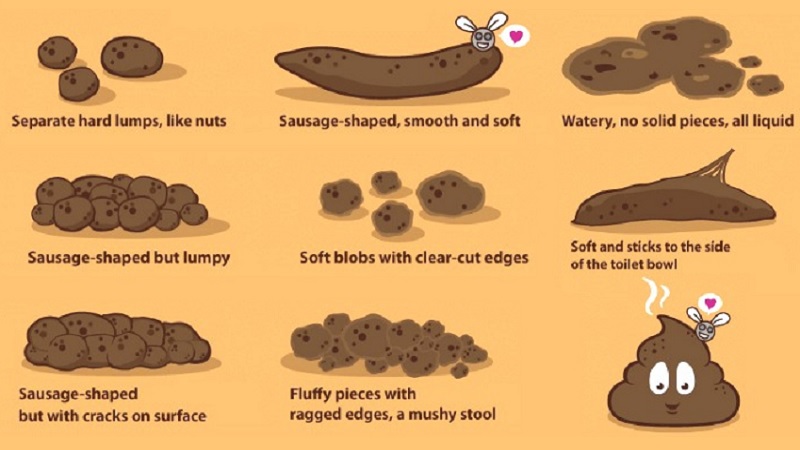
To maintain water and electrolyte balance, an adult should consume 30-40 mg of liquid per 1 kilogram of body weight per day 1.2 . Basic needs must be covered by drinking water 2 or still mineral water.
In addition, adults with symptoms of constipation are advised to limit their intake of coffee and tea, as they are diuretic and cause stool hardening 1 .
An active lifestyle and special exercises aimed at strengthening the anterior abdominal wall and mechanical stimulation of peristalsis help to solve bowel problems 1 .
Medical therapy
It is prescribed by a doctor according to the type of constipation in order to empty the rectum, relieve the condition and normalize the digestive tract.
Laxatives include several groups of drugs. Only a doctor can determine which one is best suited for certain symptoms of constipation in an adult. Despite the common indications for use, such drugs have different mechanisms of action and side effects – this should always be taken into account.
- Osmotic laxatives (saline laxatives, lactulose, macrogol) act throughout the entire intestine 2 . They are practically not absorbed inside and, remaining in the intestinal lumen, attract water 3 . Liquefaction and an increase in the volume of feces stimulate peristalsis, accelerate and facilitate defecation. The downside is that often the use of drugs in this group can lead to dehydration and leaching of the necessary microelements from the body 3.4 .
- Drugs that irritate the intestines and thereby increase its contractions can act in the small (eg, castor oil) and large (senna, buckthorn, sodium picosulfate, and others) intestines 2.3 . On the downside, irritant laxatives are addictive with prolonged and frequent use and can damage the intestinal mucosa and disrupt its function 3 .
- Emollients such as vaseline and almond oil act at the level of the rectum and facilitate defecation mainly by moisturizing and “lubricating” the mucosa 1 .

- Combination laxatives acting at the level of the rectum and terminal sigmoid colon can be used to treat the problem of constipation 3 . An example of such drugs is micro enema MICROLAX ® , the main active ingredients of which are sodium citrate, sodium lauryl sulfoacetate and sorbitol 5 . Sodium citrate displaces bound water from the contents of the intestine, sorbitol attracts it into the intestinal lumen, and sodium lauryl sulfoacetate thins the stool and facilitates their excretion. The action can begin within 5-15 minutes after the introduction of microclysters 5 . The high safety profile allows the drug to be used for symptoms of acute and chronic constipation in adults, including pregnant women 5 .
At the same time, it is important to understand that in the fight against colostasis it is not necessary to achieve daily bowel movements – it is necessary to “teach” it to work independently 2 .
Motor Regulators
For constipation associated with increased or decreased tone of the colon, the doctor may recommend taking antispasmodic (reducing the contractility of the intestinal muscles) or prokinetic (activating peristalsis) drugs 3 .
Probiotics
The effect of colon microflora on peristalsis has been proven by research 1 . Therefore, probiotic preparations based on live bifido-, lactobacilli and their combinations can promote recovery 2.3 . If necessary, the doctor prescribes them.
Biofeedback therapy
Biofeedback therapy is used for constipation associated with pelvic floor dysfunction, including anal sphincters 2,3,4 . Its purpose is to teach the patient to relax the muscles of the anus and at the same time strain the abdominal muscles when the urge to defecate occurs.
The treatment is based on the principle of biofeedback, carried out in the form of training using special equipment and is considered quite effective 3 .
Surgical treatment
Surgical treatment of colostasis – an exceptional measure used when other methods are ineffective 3 .
In order to restore regular stools, various operations on the intestines are performed. But studies show that a quarter of patients after the intervention remain dissatisfied with the results 1 .
Constipation is a complex problem in gastroenterology, the solution of which largely depends on timely diagnosis and treatment. Given that difficult bowel movements can be a symptom of a serious illness, if constipation recurs, a doctor’s consultation is mandatory.
The information in this article is for reference only and does not replace professional medical advice. For diagnosis and treatment, contact a qualified specialist.
Literature
- E.N. Baryshnikov, V.G. Rumyantsev . Constipation in the practice of a gastroenterologist. Consilium Medicum. 2007; 7: p. 38-43.



 2 Causes of constipation
2 Causes of constipation 12.0.6 When should I see a doctor if I have constipation?
12.0.6 When should I see a doctor if I have constipation?

 One such drug is metoclopramide, which acts on nerve receptors.
One such drug is metoclopramide, which acts on nerve receptors. In this case, it is important to immediately consult a doctor;
In this case, it is important to immediately consult a doctor;


